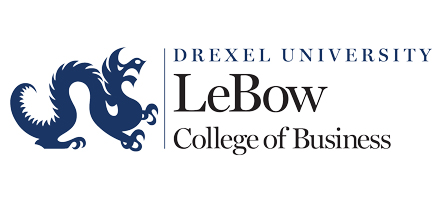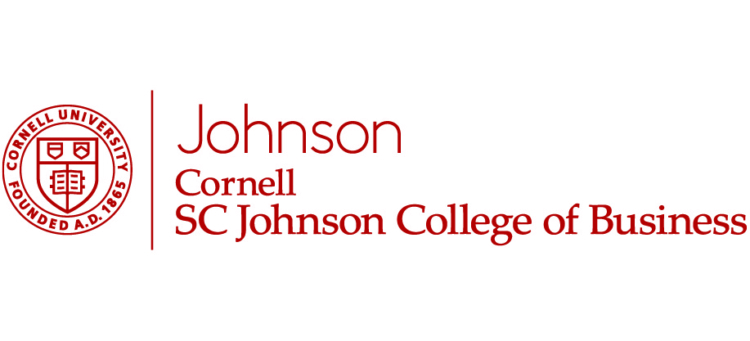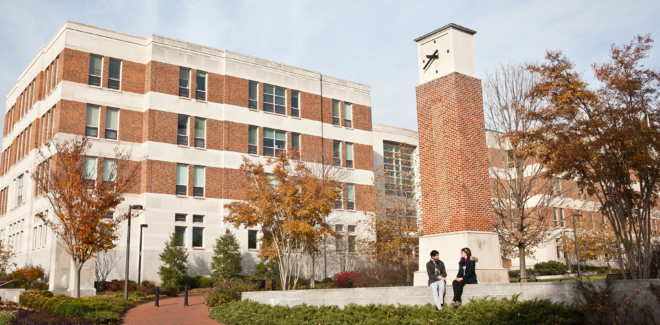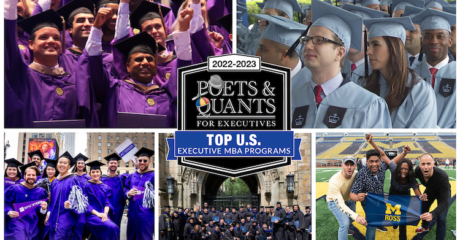Don’t be afraid of conflict and don’t be afraid to utilize frameworks outside of your comfort zone. That’s what Shelbi Brookshire, Senior Director of EMBA Recruiting and Alumni Engagement at University of Maryland, says is the meaning of the school’s executive MBA program tagline: Lead Fearlessly.
“True innovation isn’t going to come without diversity of thought which will bring conflict. Don’t be afraid to navigate through that,” she says. And with that, Brookshire tells Poets&Quants for Executives that the ideal candidate for the program is one who has mastered her/his niche in the workplace and is now looking to widen their lense to understand and learn the perspectives of other functionalities.
‘I WANTED TO LEARN FROM OTHER PROFESSIONALS WHO HAD VAST EXPERIENCE’
Those were the exact sentiments for Linda Allen, a 2017 graduate of the EMBA program at the Smith School of Business. Allen, who is Chief of Treasury for Prince George County in the state of Maryland, says she wanted to get an MBA to become a more well-rounded businesswoman. “While I had the experience and practical, hands-on knowledge of finance, I wanted to get all of the different facets of business. This was the biggest reason why I pursued an MBA.”
But what drove her toward an Executive MBA, Poets&Quants inquired. “It was mainly because of my experience,” Allen said. She was searching to become a more versatile business person, but she already had 20 years of experience, 15 of which were spent in management.
“I wanted to learn from other professionals who also had vast experience. The Smith school definitely advertises themselves as being the program for people with a lot of experience. I visited a lot of classes before I started and saw that it was true. So I decided it was the program best suited for me.”
SKILLS STRENGTHENING AND AN EXECUTIVE COACH FOR LIFE
Almost 95% of incoming students are employed, but the school says it’s also known for entrepreneurship. Shelbi Brookshire tells Poets&Quants, “Some students may be in the early stages of starting a business or they’re getting ready to launch a business.” Still, students entering Smith’s EMBA typically do so with around 17 years of professional experience and several years of managerial experience. To this end, a big focus — and what the school sees as a differentiator — is the program’s emphasis on leadership skills strengthening and executive coaching.
The 19-month program begins each January with a brand new cohort made up of about 40 students and kicks off with a week-long, on-campus residency. In addition to meeting faculty and cohort mates, getting acquainted with Smith, and learning more about the program they’re set to embark upon, students are introduced to executive assessment activities.
“Every student goes through eight different assessments and strength-finders,” Brookshire explained. “A baseline of strengths and developmental opportunities are then established for students from the insights that are gained from the assessments.”
This data is then used to help pair students with an executive coach – a coach who will work closely with them throughout the program to refine their skills and leadership style to help them become the executive leader they aspire to become.
“Their executive coach meets with them six times throughout the year and a half program and helps them unpack assessment feedback and create a development plan to hone in on strengths they may be underutilizing.”
What’s more, the coach-student relationship doesn’t cease at graduation. Instead, Smith’s executive coaches that students get are life-long, something the school markets as a standout feature for prospective students to take advantage of.
THREE-PRONGED APPROACH: FOUNDATION, PROJECTS, AND MASTERY
During kick-off week, there are also credit-bearing classes in the form of mastery sessions that are prevalent throughout the duration of the program as a whole. In week one, students take mastery sessions on executive competencies and they get started with their accounting and strategy courses. It’s safe to say, the opening residency is a jam packed week for new students.
Following the week-long induction, classes convene every other weekend on Friday and Saturday. On those days, between 8 A.M. and 6:30 P.M., students are either in class, in team meetings, or working through an assignment with classmates in the form of group work. For the curriculum, the Smith School breaks it’s Executive MBA program into three components: the foundation, the projects, and the mastery.
“The foundation is your usual core courses,” says Brookshire. “Standard ones in accounting, finance, marketing, economics, data modeling, leadership and human capital, info technology operations, and ethics. These are mandatory foundation classes.”
Next, are three action learning projects that students fulfill while completing the program. Projects focus on business problem solving, changement management/leadership, and entrepreneurship.
The purpose, the program’s website says, is to allow participants to tie their learning directly to specific company needs by tackling a real-time problem. “We encourage them to take one from their employer, form teams, and do a live consulting project for a company.”
Finally, there are the mastery courses woven throughout the program and designed to integrate students’ learnings from the key business discipline areas, but mostly to accelerate leadership development.
“Topics for mastery classes will vary,” Brookshire explains. “For the first third of the program, we do executive communications, navigating conflicts, we’ll also do some on innovation. After we complete the ones we feel are mandatory, we provide a list of topics for students to vote on and students can suggest topics as well. It allows us the flexibility to pivot and stay relevant to what’s happening in business landscape.”
GETTING OUT WHAT YOU PUT IN
The total curriculum is 54 credits wherein students take two to three classes at a time and four to five within a given semester. The schedule is accelerated and the workload is intense, former student Linda Allen tells us. She says the high intensity is what she wishes she would have been better prepared for and would advise prospective students to keep in mind.
“I wish I had a better sense that it was going to be so life consuming. It’s an important thing to know.” Allen said that in addition to her full-time treasury role, she spent three hours each night on school work and even more on weekends. “You get out of it what you put into it. The time you spend helps you get the maximum benefits of the program.”
However, Allen says she saw an immediate impact from the work she put in. “My staff started thinking they were the guinea pigs for things I was learning. I was talking differently and suggesting we do things differently. There was some immediate impact on the way I motivate staff and some of the HR things. Being a finance person and quantitative person, soft skills aren’t as much on my mind, nor are they a forte for me. I really do think the program helped me to become more focused on the people side of management.”
TWO INTERNATIONAL STUDY OPTIONS
Since the program is cohort structured, students take all the same classes together. That is until they’re a year into the program and will have the option for international travel. “Our international trip every year is almost always China or India then some will change,” Brookshire told us. “For instance, two years ago was Japan and Korea, one to Costa Rica, one to Australia, and there’s been one to Malaysia.”
Brookshire says during the trips — which last about seven to 10 days — students and their professor visit two corporations a day, there is some pre-coursework to complete before traveling, and there is a required course deliverable afterward. International travel is not required, though, and the school reports that approximately 25% of EMBA students opt in to the offer.
Allen was one of the 75 percenters who opted not to travel and says she’s glad she made that decision. “If you don’t do international travel, you do an international business course which I feel like was so amazing . When you travel, you only get one country. When you do the course, you get information about a lot of different countries. If you had a business and were going to expand that business globally, what are you going to do to be successful at it? Because so many people have failed at it.”
“The school brought in speakers from companies that have international footprints, knowledge, and understanding about what it takes to do business globally. Execs came in from Mattel, Hilton Hotels, and others. It was really great to hear them talk about their companies, how they navigated mistakes they made, and navigated the global map with their businesses.”
Finally, the program draws to a close with a second five-day residency. The five-day business simulation capstone is described by alumni as the hardest, yet most rewarding aspect of the entire Smith EMBA experience. The Marketplace Game divides students into small groups where they compete to establish and operate the best organization in a two-year compressed, simulated timeframe.
ENROLLING AND INVESTING IN YOURSELF
Acceptance into EMBA program at the University of Maryland Smith School requires an undergraduate degree with a minimum GPA of 3.0. Waiver of the GPA is rare, but the school says it is possible for an applicant with exceptional post-undergraduate education or professional work experience to get through. While a 3.0 GPA is the only minimum that applicants must have, the school looks for students to have around eight to ten years of work experience with at least three to five years of management experience mixed in. After acceptance, be prepared for mandatory prerequisite work the school requires students to complete online.
As far as cost goes, the Smith EMBA carries a sticker price of $121,900. Alumna Linda Allen attests that the self-investment is worth it. She financed the program 100% on her own. “It’s important to invest in yourself at whatever stage in life or your career you’re in. That’s what I did and I have no regrets whatsoever.”
Allen goes on to say she feels like it was one of the best decisions she’s ever made. “I didn’t really understand that going in, but I learned so much about me, about how I make decisions, my strengths, my weaknesses, the things I really need to work on to become a better manager, a better leader, and how to accept differences in other people.”









